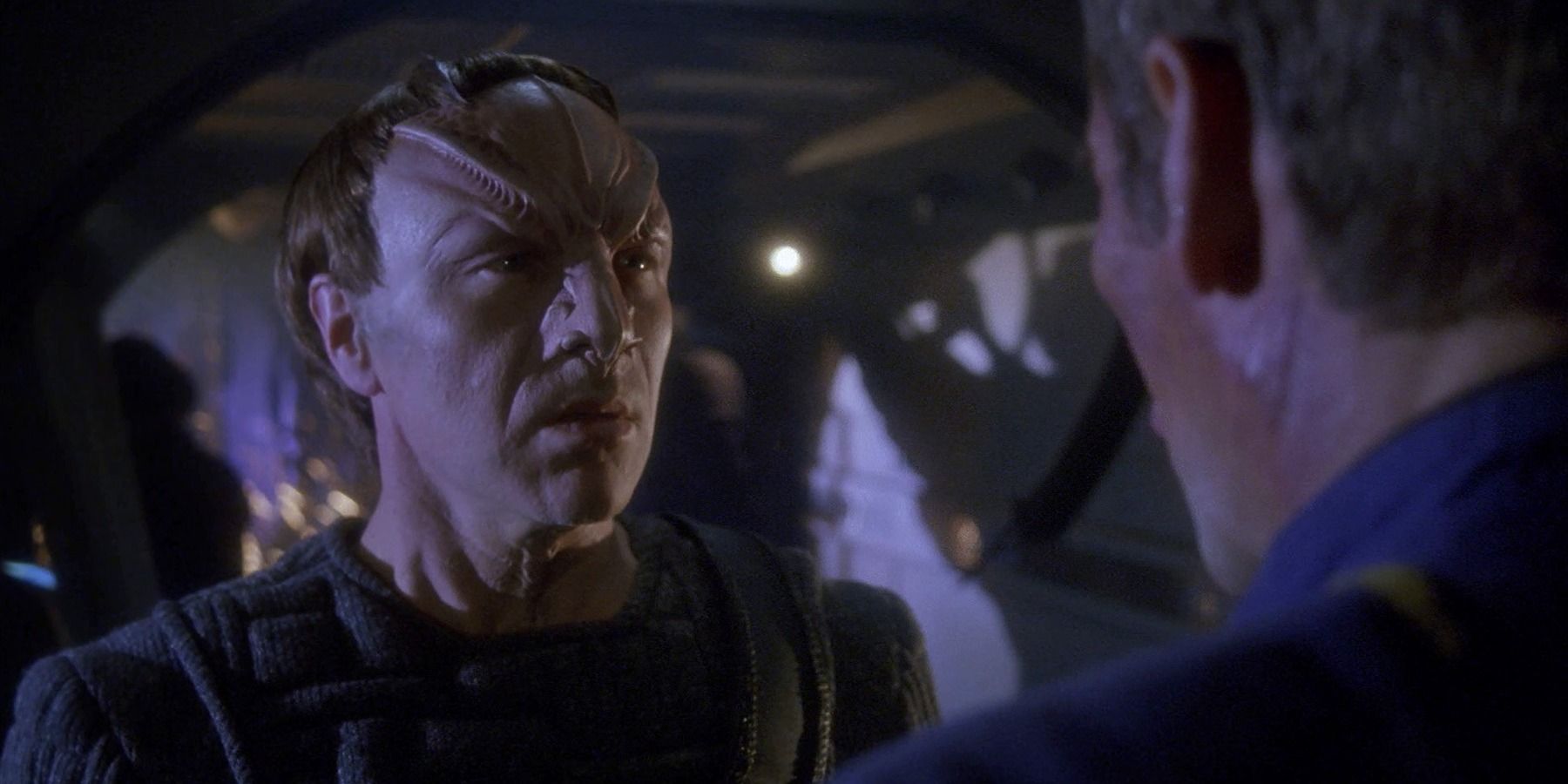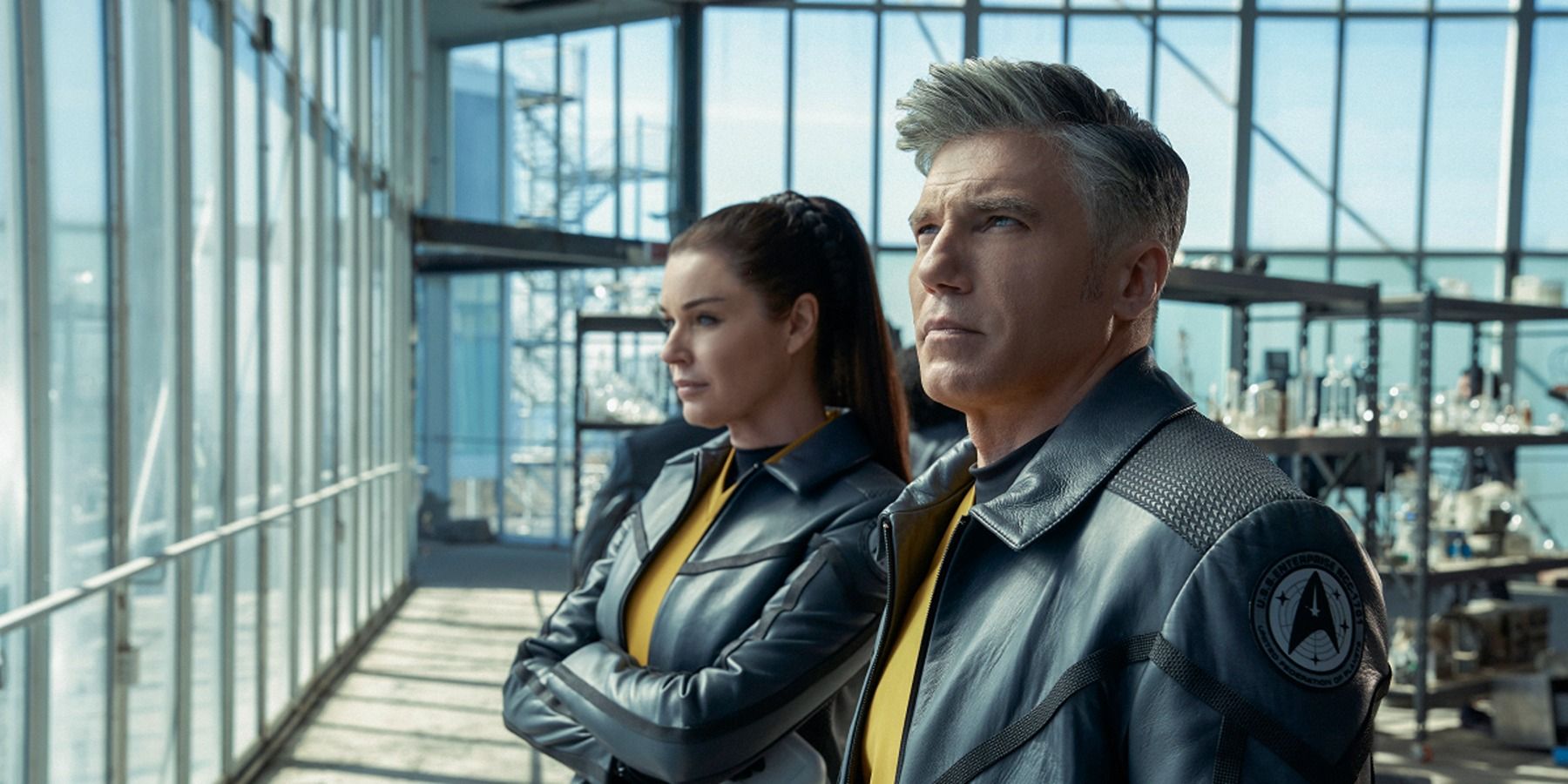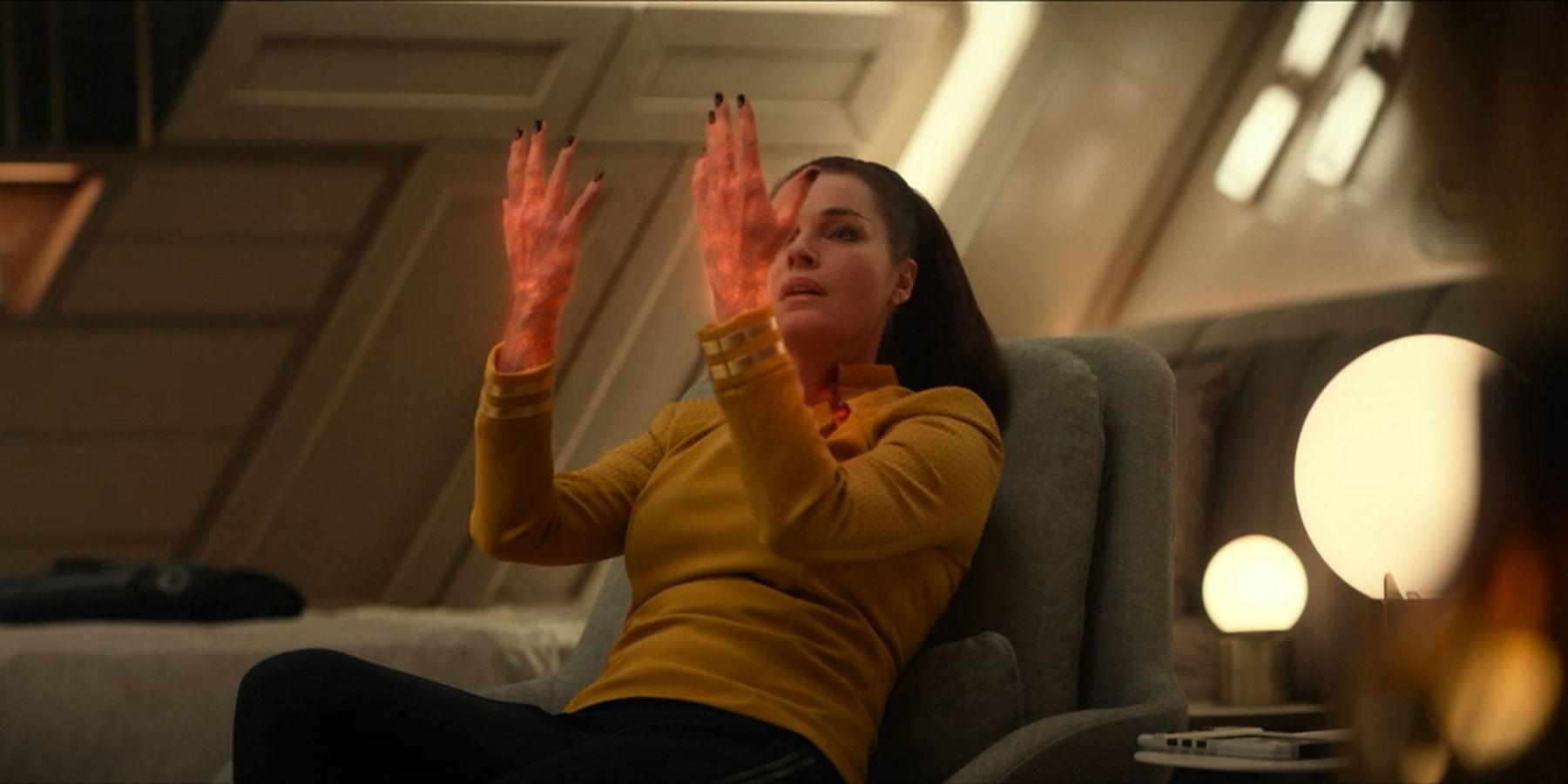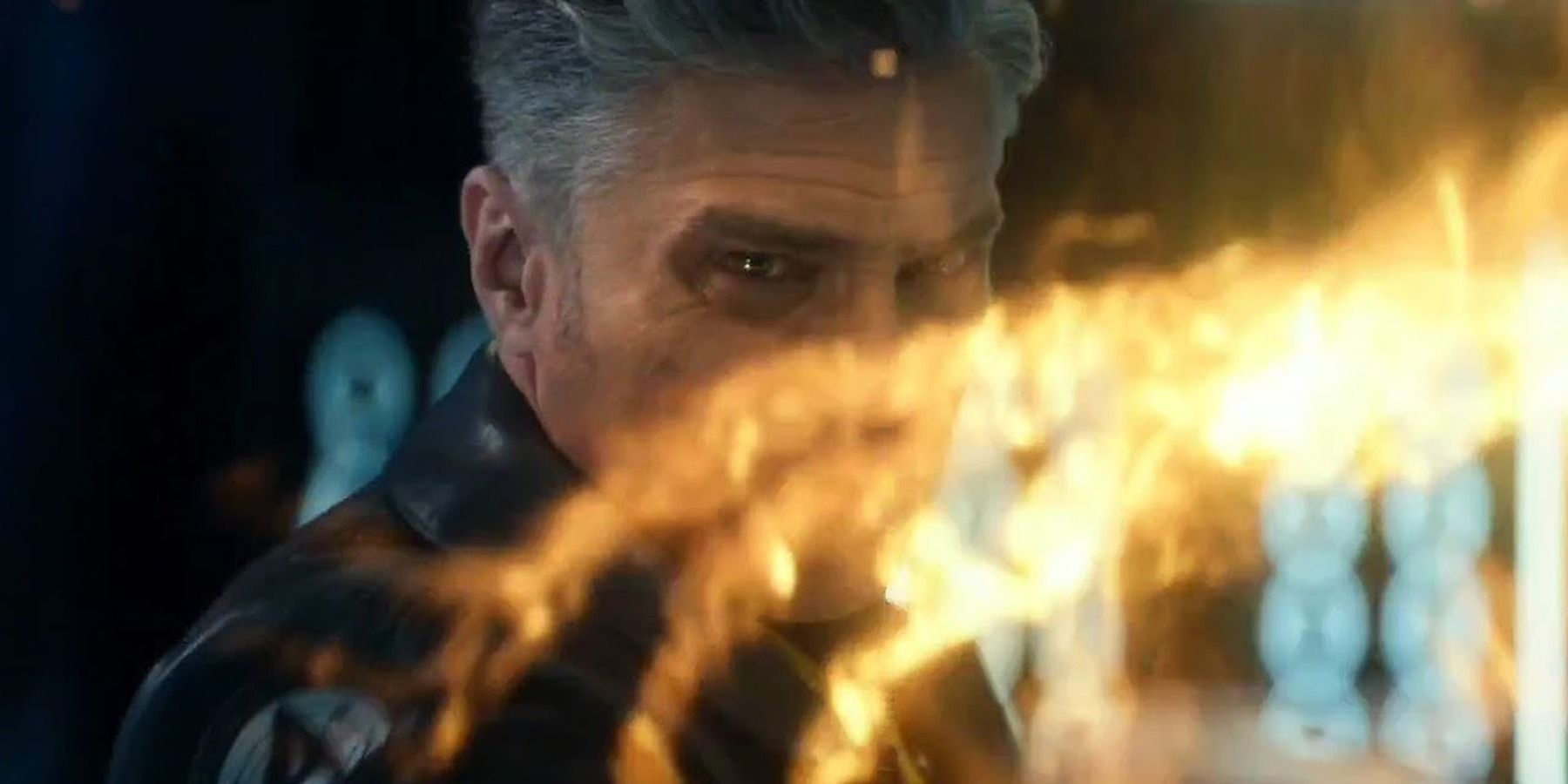One of Star Trek’s defining features is its ability to create moral dilemmas for its characters, usually by introducing them to diverse civilizations and belief systems. In Star Trek: The Original Series, Captain Kirk and his crew come into contact with many peoples that have ways of life incomprehensible to us: the populations of Eminiar VII and Vendikar go to war virtually; the people of Beta III engage in a festival of destruction at the end of every day; and the Klingons celebrate death in battle. Diplomacy is the Enterprise crew’s most important tool, but in certain Star Trek stories, it’s clear that the Federation doesn’t negotiate with everyone.
The Illyrian people were first introduced in Star Trek: Enterprise, where they had a brief but brutal encounter with Captain Archer. Since this initial appearance, the Illyrians have been mostly absent from following series, only showing up recently in Star Trek: Strange New Worlds. Pike’s first officer Una Chin-Riley is revealed to be an Illyrian, and her identity must be kept secret in order to protect her career and citizenship within the Federation. The Illyrians are a race of people whose reliance on genetic augmentation always been shunned by the Federation, but modern Star Trek has begun to question whether this perspective is bigotry instead of caution.
The Illyrians were first shown in Star Trek: Enterprise, season 3, episode 19, “Damage,” in which they had a contentious first contact with Starfleet. In this episode, the Illyrians are portrayed as unfortunate bystanders in the aftermath of a battle between the Xindi and Captain Archer’s Enterprise crew. With a nearly sundered ship and an injured crew, Archer makes the decision to plunder the Illyrian ship for its warp coil, stranding the alien people in deadly space. The Illyrians are left with some trellium-D and a few crates of food, while the Enterprise makes its escape. There wasn't much negotiation during their first meeting, and practically no exchange of information about their beliefs. The Illyrians are presented as people who were in the wrong place at the right time, but not as a threat to anyone. This changes as the Federation becomes more familiar with Illyrian culture.
During the events of Star Trek: Enterprise, there is not yet any formal version of the Federation, but its ethos is being built (and occasionally transgressed). Earth was riddled with eugenics wars and unethical human augmentation in the 20th century, as revealed in Star Trek: The Original Series, season 1, episode 24, “Space Seed,” leaving most humans wary of genetic manipulation. Earth becomes one of the founding members of the Federation, and forms its basic values, including disbarring of any form of eugenics. This zero-tolerance policy doesn’t allow for special cases, and results in the generalization and exclusion of the Illyrians, which proves to be short-sighted.
In Star Trek: Strange New Worlds, season 1, episode 3, “Ghosts of Illyria,” the Federation’s ban on Illyrian membership is first put into question. The episode depicts the Enterprise crew’s arrival on Hetemit IX, the home of an abandoned Illyrian colony, and the resulting crisis. Una Chin-Riley, Pike’s Number One, is the only crew member resistant to a disease that spreads through the Enterprise, and as a consequence must reckon with her identity as a genetically modified Illyrian. The Federation’s opposition to genetic engineering meant Chin-Riley had to lie about her race to enlist in Starfleet, and in this episode, she wonders if the Federation was the one at fault. There is significant bias towards the belief systems of the founding members of the Federation, and this may be impeding other cultures’ development.
Captain Pike and Spock have a new perspective on the Illyrian people towards the end of Star Trek: Strange New Worlds, season 1, episode 3, “Ghosts of Illyria,” one that aligns more closely with that of Chin-Riley. Pike and Spock are protected from an ion storm by the remains of the Illyrians on the Hetemit IX colony, people who have been reduced to energy spirits. The Illyrians would have survived the storm if they had not reversed their own genetic modifications, a “good-faith gesture” that would have permitted them entry to the Federation. The Federation has never been perfect, but this episode puts its shortcomings in a new light, especially for Pike and Chin-Riley. Pike dispels some of the prejudices he learned, and Chin-Riley is left to wonder whether Pike would have shown the same kindness to her if she wasn’t the ‘ideal’ Illyrian.
The Illyrians are first presented as some of the many victims of a war, caught in the crossfire between Starfleet and the Xindi. After almost a century, it’s clear that Starfleet (and the Federation) is still jumping the gun when it comes to dealing with Illyrians, indulging biases before extending the arm of diplomacy. Captain Pike and his crew are the ideal group to rally for the rights of the Illyrians within the Federation, but they may have a fight on their hands. Chin-Riley is arrested for her deception in Star Trek: Strange New Worlds, season 1, episode 10, “A Quality of Mercy,” and it doesn’t look like she will be receiving a lot of sympathy for hiding her identity.
The Federation has shunned the Illyrian people for their way of life for up to a century, but modern Star Trek: Strange New Worlds is allowing its characters to analyze the reason. Star Trek has always welcomed conversations on ethics, philosophy, politics and more, and there will surely be more on the topic of Illyrian rights. Chin-Riley believes they have a place in the Federation. She states:
“My people were never motivated by domination. Illyrians seek collaboration with nature. By bioengineering our bodies, we adapt to naturally-existing habitats […] we modify ourselves. There’s nothing wrong with that.”




